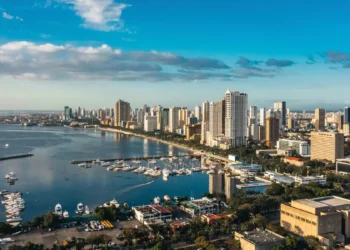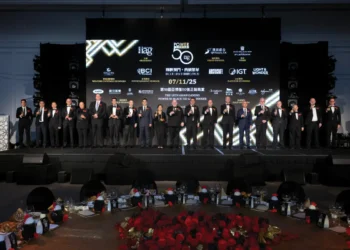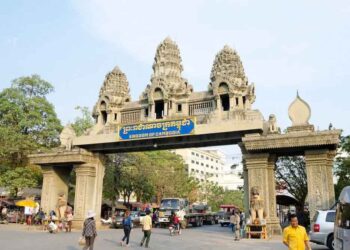Las Vegas Sands Corp. isn’t sitting on its hands waiting to see how things pan out on table quota in Macau.
Steve Jacobs President of Sands China, the company’s local unit, told Bloomberg yesterday that it plans to open most of its suspended plots five and six on Cotai “between the third quarter of next year and early 2012”.
It appears the Macau government will only allow a maximum 700 tables in the market between now and 2013 to add to the 4,811 the Gaming Inspection and Coordination Bureau says were in the market in the first quarter of this year. Sources described as “close to the process” said last week that Galaxy Entertainment Group has been told it will be allowed 400 tables for its own Cotai project. It therefore raises the intriguing possibility of the gaming industry equivalent of an egg and spoon race between LVS and Galaxy to complete their Cotai projects.
Were LVS, for example, to complete phase one of Cotai five and six (including two casinos and three hotels) before Galaxy finishes off Galaxy Macau (the latter is due for completion in the first half of 2011 but could possibly spill over into the third quarter) it would be hard for the government not to allocate the necessary tables to LVS–possibly as many as 400 for a first phase completion. To withhold such table allocation from LVS would look like the government was somehow taking up an anti-LVS stance. On the other hand if the government has already told Galaxy privately that it can have 400 tables as reported, then the government could end up being bounced into breaking its own table cap pledge.
A lot can happen between now and 2011. The recent history of Macau suggests a tendency for a disconnect between publicly stated policy and what eventually happens. The operators, however, cannot afford to make that assumption, and so, must plan based on the information they have via public channels such as the media, and whatever private channels they have available with government and regulators.
What does seem clear is that by taking a proactive rather than passive stance on Cotai five and six, LVS is putting the table quota ‘ball’ firmly back into the government’s court. Publicly, however, LVS is saying all the right things, having apparently learned lessons from earlier run-ins with the Macau authorities.
In an interview with the Wall Street Journal yesterday Mr Jacobs stated: “We support the table limitation approach that is being taken by the government. We think it’s good for Macau because it forces the other concessionaires to invest in as we have in non-gaming operations to drive their business forward.”
Mr Jacobs also said the main motivation for getting on with Cotai five and six was the need for more hotel space.
“The biggest single issue we face is that we need more hotel rooms. We can’t house people,” he told Bloomberg.
It’s possible that what Mr Jacobs means is that ultimately without more hotel rooms on Cotai, LVS can’t house people at a price sufficiently attractive to drive non-comped hotel bookings. For the Macau market as a whole, the average daily room rate in January was 1,044 patacas (USD130) according to data from the Macau Government Tourist Office. The ADR in Las Vegas that month was USD99.75 according to the Las Vegas Convention and Visitors Authority.
Is it reasonable for casino operators to assume it’s sustainable to charge 30 percent more for a hotel room in Macau than in Las Vegas, when gross domestic product (GDP) per capita even in the most prosperous parts of China is less than a quarter that of the United States? In 2009 China Daily, an official English-language newspaper in China, reported per capita GDP in the mainland Chinese city of Shenzhen at USD10,000. The CIA World Factbook estimates in the same period the US per capita GDP at USD46,400.
LVS’s results for 2009 actually show every indicator for its hotel business in Macau–total room revenues; average daily room rate; occupancy rate and revenue per available room–down year on year from 2008. The one exception was Four Seasons Macao, which recorded a 20.3 percent rise in occupancy and a 40 percent increase in revenue per available room. LVS can reasonably argue that the overall dip in Macau hotel performance was due to the effects of global recession.
It’s harder, however, to argue for the overall health of the hotel segment in Macau as a justification for going full stream ahead with Cotai five and six. LVS’s own data show that in 2009, although hotel occupancy fell only 1.7 percent at the Venetian Macao, revenue per available room fell 11.4 percent. It’s difficult to escape the conclusion therefore that some rooms were being given away, or at least heavily discounted. That doesn’t normally happen during periods of strong or upward demand.
Mr Jacobs cited as reasoning for building more rooms that the exhibition and convention industry will start growing in the next two years. It might. Some readers may think it sounds like “Build it and they will come”. We’ve heard that somewhere before.




































